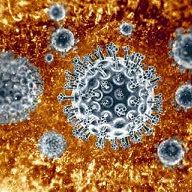Article
Novel Hep C Drug in the Works
Author(s):
Scientists have gotten a step closer to finding novel anti-hepatitis C virus (HCV) therapies, by investigating tripartite motif 14 (TRIM14) as a mitochondrial signaling adapter.

Scientists have gotten a step closer to finding novel anti-hepatitis C virus (HCV) therapies, by investigating tripartite motif 14 (TRIM14) as a mitochondrial signaling adaptor. The research, conducted by Shanshan Wang at The Key Laboratory of Gene Engineering of the Ministry of Education and State Key Laboratory for Biocontrol at the School of Life Sciences at Sun Yat-Sen University in Guangzhou, China and colleagues, was published in the journal Nature recently.
The researchers begin by saying, “Hepatitis C virus, a single-stranded RNA, belongs to the flaviviridae family, is an enveloped virus with a 9.6-kb genome.” They go on to describe the N- and C-terminal segments, saying, “the C-terminal protein of the polyprotein contains nonstructural proteins p7, NS2, NS3, NS4A, SN4B, NS5A, and NS5B.”
NS5A has three domains, D1-D3, which play various roles in protecting HCV from the immune response. The researchers describe the innate antiviral response saying, ‘When the host detected viral infection, cells can trigger a series of signaling events that lead to production of inflammatory cytokines and type I interferons (IFNs).”
IFNs can “play a central role in restricting virus replication” say the researchers, adding, “The tripartite motif containing (TRIM) proteins have been implicated in many biological processes including cell differentiation, apoptosis, and transcriptional regulation.” TRIM14 and its function in HCV are not clearly understood, and in this study, the researchers investigated the “inhibitory function of TRIM14 to HCV replication and infection” and found it “is independent of its activity to up-regulate the type I interferon pathway and NF-kB production,” they say.
“In summary, our findings indicate that TRIM14 could inhibit HCV replication through its interaction with NS5A, which leads to the degradation of NS5A in the K48-linked ubiquitination dependent way,” conclude the authors. They believe that the findings help advance the understanding of the mechanisms “responsible for host defense against HCV infection,” and that it “provides the molecular basis for the potential development of novel anti-HCV therapeutics.”
Related Coverage:





